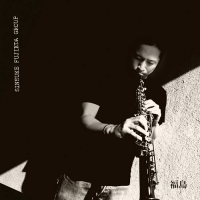Home » Jazz Articles » Album Review » Laurie Anderson: Big Science
Laurie Anderson: Big Science
At the time when Big Science was released, Anderson was in a transitory stage from being an avant-garde performance artist in Downtown New York into a mainstream artist. During the early '70s, she arrived in New York to study art history but soon steeped herself in almost every aspect of fine art. As the art scene of New York's SoHo district grew, so did Anderson's reputation. Inspired by the Downtown milieu which included composers Philip Glass and Steve Reich, Anderson struck on her own with a collage of music and visuals. This period of art and performance as well as other periods of her illustrious career were brilliantly covered in her book "All the Things I Lost in the Flood."
The turning point in Anderson's career was her 1981 song "O Superman" which would be the centerpiece of the subsequent album Big Science. With its dulcet vocal cadences synthetically enhanced by digital vocoder where her synthesized voice kept repeating "Ha, ha, ha, ha, ha," the song reflected strong influences from minimalist composers and their repetitive patterns. The music is very much a product of the same low- Manhattan community that spawned Philip Glass, a host of punk-rock and new wave bands, several performance artists, and the Love of Life Orchestra whose members will appear on her subsequent records. The song itself was her reaction to the failed US rescue attempt to save hostages in Iran toward the end of the '70s. The first line of the song "O Superman, O Judge, O Mom and Dad" is a corruption of the first line of an aria by French composer Jules Massenet: "O souverain, o juge, o pere" (Oh sovereign, oh judge, oh father). From there she develops a series of different personae through the use of electronic filters which change the sound of her voice and the vocoder. The song was originally pressed in a limited edition on a small label. But something totally unexpected happened as people began buying it and it peaked at number two in the UK and was followed by Big Science, which saw Anderson cross into the mainstream.
But Big Science and "O Superman" were part of a bigger project of hers at the time titled United States.Einstein on the Beach in 1976 she became more determined to raise the level of her art. United States was her magnum opus, an ambitious 9-hour presentation that toured the world. Words, film, and images plus acoustic and electronic sounds, dazzled the audiences. It was a mixture of comedy, concert music, rock, avant-garde electronics, still and moving visual images, and theatrical touches like a soprano on a diving board or a tape-bow violin that actually spoke when played. Her talking violin became even more impactful when played by Anderson dressed in black with only her neon-enhanced lips visible. United States I-IV was a satire on corporate America, an alternative US history from Red Indian to rock 'n' roll. On Big Science she distilled this lengthy performance into eight powerful songs. In subsequent pieces, Anderson gave free rein to her native talent for humor and storytelling. The songs are observations and surveys on the everyday business of living in one of the most powerful nations on Earth. Her texts, full of everyday phrases from television news or telephone answering machines as well as word-association games, could be ominous or disquieting at times, but they are never intimidating or defiantly obscure. This combined with Anderson's uncanny sense of timing and her sly-but-friendly delivery, gave her works the potential to appeal to a broad range of listeners.
Big Science was a portrait of a country and its society seen from a person who traversed it far and wide and who also tried to observe it from abroad i.e. from Europe, as Anderson at the time—like many American artists—traveled and worked a lot in the old world and was able to portray it. Thus the songs are populated with unusual characters who portray the advancements of society in the form of digitalization and fast-paced modernization and "learning to live with it." And she portrayed the country as a building on fire or an air crash as on "From the Air." In this song, the captain of an airplane announces that a crash is imminent. His voice is the voice of authority but his expression is falsely optimistic despite the fatal fall. In general, Big Science is about technology and the brutal changes it imposes with its galloping advancement. Every piece of paper has two sides, and on one hand it shows the advancements it brings to a large society and its downfalls and the absurd.
The brilliance of this record is that it still sounds fresh and its observations are still valid regardless of the symbolism and theatricality of Anderson's ways in approaching them. The changes imposed by technology on societies and individuals are now happening at an even faster rate, and people are often unable to follow. Most importantly, this record gave us Laurie Anderson, the artist, the musician, the storyteller, the pop star, the intellectual, the inventor, the singer, and the world has been better and more interesting for it.
Track Listing
From the Air; Big Science; Sweaters; Walking & Falling; Born, Never Asked; "O Superman (for Massenet); Example #22; Let X=X/It Tango;
Personnel
Additional Instrumentation
Laurie Anderson: vocals, vocoder, Farfisa organ, percussion, Oberheim OB-Xa, sticks, violins, electronics, keyboards, handclaps, whistling, marimba, cover artwork; Roma Baran: Farfisa bass, glass harmonica, sticks, handclaps, Casiotone, accordion, whistling; Perry Hoberman: bottles and sticks, handclaps, flute, saxophone, piccolo, backing vocals, assistant producer, art direction; Bill Obrecht: alto saxophone; Peter Gordon: clarinet, tenor saxophone; David Van Tieghem: drums, rototoms, timpani, marimba, percussion; Rufus Harley: bagpipes on 3; Chuck Fisher: alto and tenor saxophone on 7; Richard Cohen: b-flat clarinet on 7, e-flat clarinet on 7, bass clarinet on 7, bassoon on 7, baritone saxophone on 7; Leanne Ungar: engineer, backing vocals on 7; George Lewis: trombones.
Album information
Title: Big Science | Year Released: 2021 | Record Label: Nonesuch Records
Tags
PREVIOUS / NEXT
Support All About Jazz
 All About Jazz has been a pillar of jazz since 1995, championing it as an art form and, more importantly, supporting the musicians who make it. Our enduring commitment has made "AAJ" one of the most culturally important websites of its kind, read by hundreds of thousands of fans, musicians and industry figures every month.
All About Jazz has been a pillar of jazz since 1995, championing it as an art form and, more importantly, supporting the musicians who make it. Our enduring commitment has made "AAJ" one of the most culturally important websites of its kind, read by hundreds of thousands of fans, musicians and industry figures every month.


















